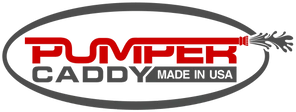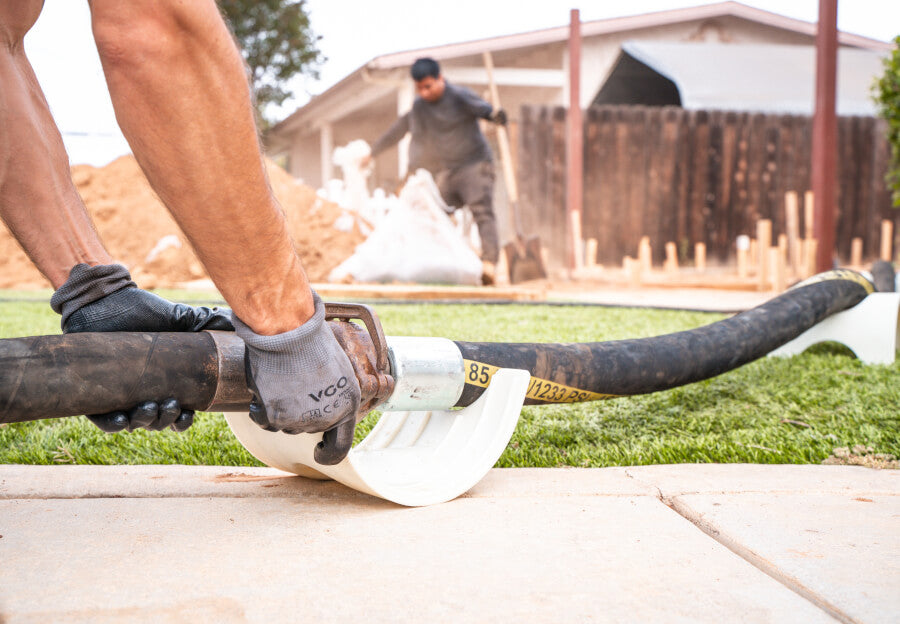Concrete pumping is an essential part of modern construction. And knowing how to set up a concrete line pump is important when doing any kind of construction work. With that thought in mind, this article will guide you on how to properly set up your concrete line pump.
How Does A Line Pump Work?
To properly set up a line pump, you must first have a good idea of how it works. A mixing truck mixes the concrete and pours it into the hopper. The hopper keeps the concrete from solidifying. From the hopper, the concrete is sucked into the pumps via a valve.
The pumps function using a set of cylinders called the material cylinder and the discharge cylinder. The material cylinder is responsible for sucking the concrete from the hopper to the pump. And the discharge cylinder causes the concrete to be discharged to the target site.
At this stage, you can see violent thrashing of the vale and also the pump due to the action of cylinders. This is why we recommend using a stabilizer like Pumper Caddy.
As you can see, the line pump's function is dependent on the proper function of a number of mechanical units. That is why properly attaching and maintaining them is a must when setting up your line pump.
Steps To Setting Up A Concrete Line Pump
As with any trade, the more knowledge, and experience you have the easier it will be to get the job done. Let us have a look at how you can set up your concrete line pump easily.
Find A Level Surface
It is important for you to first find a level surface where you can set up your concrete line pump. You should also pick a spot where a mixing truck can back into the hopper.
Once you have chosen a safe location, level, and area where you can easily store your components, it is time to assemble your concrete line pump.
Attach The Suction Hose And Chute
Take some time at this step to look over your pump and make sure it is completely ready for use. If there is damage done to any part, take the time here to fix it before moving on with the rest of the assembly. Attach the suction hose to the pump. Attach the chute to the hose using a small amount of machine oil or silicone.
Install The Pumper Caddy
Pumper caddy is a revolutionary yet simple invention designed to protect your hoses and pumps from friction damage. If you’ve ever been to a construction site then you’ve probably seen the hoses and pumps rigorously moving around, scraping and smashing against hard surfaces. This damages the parts and results in unnecessary repair costs.
Well, now all you have to do is install the pumper caddy underneath the hoses and clamps. The caddy will help keep wear minimum and help prevent surface damage due to surges. It’s that simple.
Test The Line
Test by filling one of your containers with water and pouring it in as a check for any leaks that may have formed from assembly or from damage that was done before you received it.
Prepare For Using The Pump
After testing, prepare the pump for use. Check your concrete pump engine and oil levels. You have to check the “S” tube for any kind of obstructions and stretch out the hoses. Then hook the hoses up with the clamps.
Use slurry to prime the concrete pump and stroke it a few times. It helps the hoses to be coated before pumping concrete. In order to prevent plug-ups you might also use oil or slik-pak to prime but it is your preference.
Cleanup The Concrete Pump
Once you have finished using the pump, it's time to clean it up. You have to pour water into the hopper and start pumping again to clean the hoses. It will remove concrete stuck in the hoses. Then disconnect the hoses from the hopper.
Then clean your hopper with a brush scrub and flush the sponge down with water. After that, clean the last hose and disconnect it too. It is also ideal to grease your machine after the job is done to protect your investment and prevent costly repairs.
Types Of Concrete Pump
There are mainly two types of concrete pumps. Both of them serve two different purposes.
Line Pumps
Line pumps are used to pump liquid concrete at ground level. The hoses are used flexible enough to find ways around your house where the truck might be hard to reach. Stationary pumps need a separate truck to tow them to the working site. It also needs separate hoses to carry the concrete to the place and the most standard form of concrete pump.
The truck-mounted static pump can be taken directly to job sites but needs separate placing hoses to get the concrete to the work area. However, the Truck mixer pump is more efficient and can do it all. It just needs space to place right next to the job site.
Boom Pumps
Boom pumps are used to pump liquid concrete at a higher altitude like the upper floors of a building. The sections of roll-and-fold pumps can be folded under one another in a curling motion and don't need extra hose usage. Though they require open space for them to unfold.
The Z and ZZ pump sections can be folded like an accordion. They can fit through tight spaces and under and over obstacles. On the other hand, RZ pumps are also known as multifold pumps and have combined sections of both roll-and-fold and Z and sections.


4 comments
After reading your post, I have a good feeling that my uncle will benefit from the advice provided when he employs someone to handle his affairs in the future. He wants to enhance the state of the concrete trail in his backyard garden because it appears to have not been properly maintained. You make it seem so amazing when you claim that if we choose a concrete pumping service so we won’t need to rely on extra hoses. https://www.hanoverconcrete.com/concrete-pump-rental
Thank you for explaining that line pumps are used to pump concrete at ground level. I’ve been really curious about concrete pumping since seeing more concrete trucks in our city. It’s interesting to think about its different applications and how they may need to use both of these pumps throughout the project. https://www.citygroup.net.au
Oh, hi! After going through this article, I’m pretty sure my uncle would benefit from the tips given here when he hires someone to sort things out for him later on. You see, the concrete trail at his backyard garden seems to be poorly maintained and he wants to improve its condition. I must say, your explanation that we don’t have to rely on additional hoses should we opt for a boom pump sounds so impressive. https://www.monasconcretepumping.com.au/services
I use a line pump to vertically place shotcrete inside silos up to 150ft through steel line and hose at nozzle proper set up is key for a good day